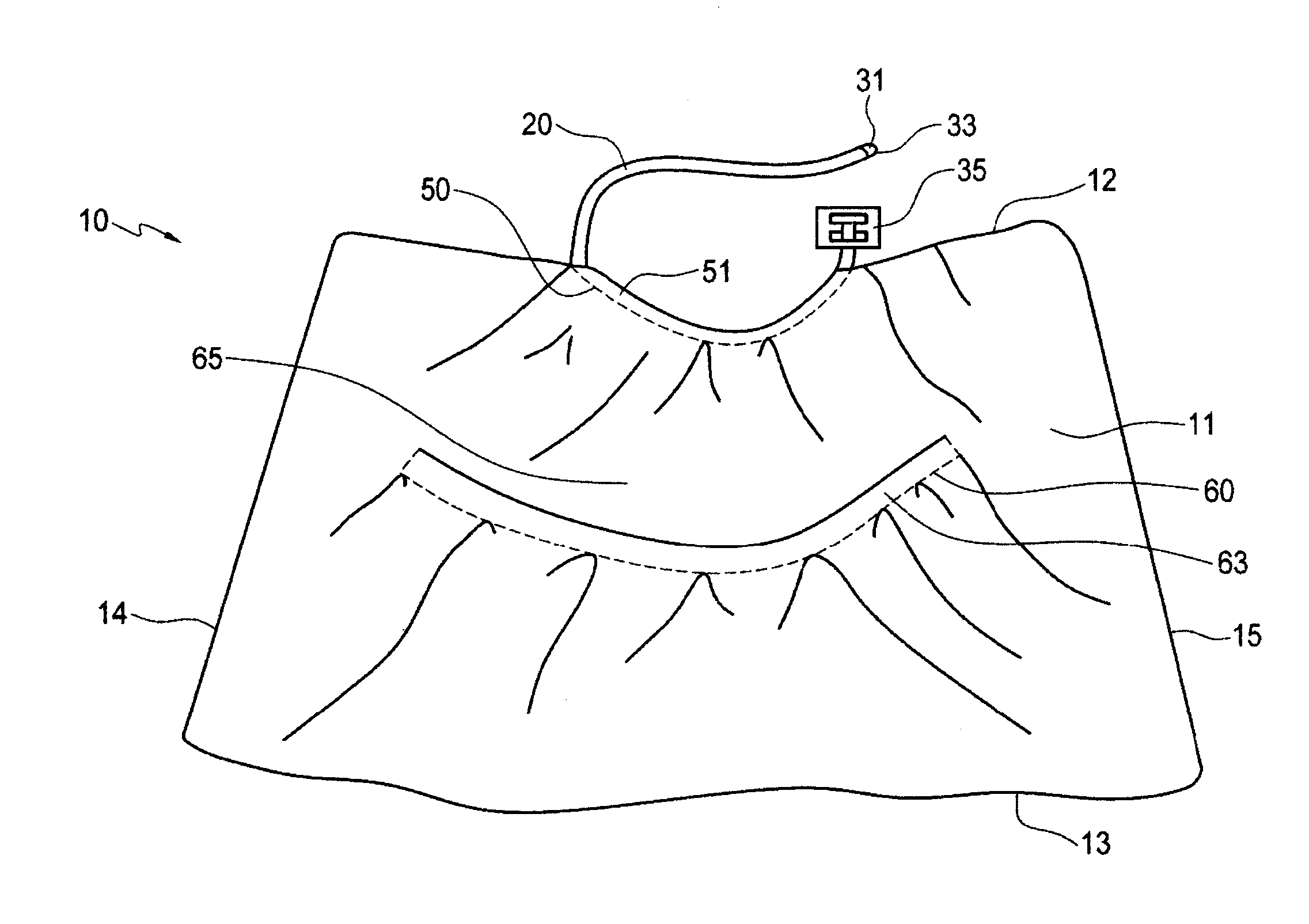Nursing canopy
a technology for nursing canopies and canopies, applied in the field of nursing canopies, can solve the problems of insufficiently doubling the ever-changing range and balance of nutrients important to a child's health, breast milk, inconvenience of frequently breastfeeding an infant, etc., and achieves the effect of protecting the modesty of a mother and reducing the stiffness
- Summary
- Abstract
- Description
- Claims
- Application Information
AI Technical Summary
Benefits of technology
Problems solved by technology
Method used
Image
Examples
Embodiment Construction
[0020]As outlined above, the invention is a nursing canopy having a double-boning system that allows a mother and infant to have an unobstructed, continuous view of one another by providing a viewing area between the mother and the baby and which provides improved air circulation for the infant and mother without smothering or distracting the baby.
[0021]FIGS. 1-5 show a nursing canopy 10 in an embodiment of the present invention. The nursing canopy 10 has an opaque fabric panel 11 having an upper edge 12, lower edge 13, a first side edge 14, and a second side edge 15 and which is of sufficient dimension to cover a nursing baby and its mother's upper front torso, from the neck to at least below her breasts and from approximately one armpit to the other. The fabric of the panel 11 is generally a lightweight, breathable fabric to allow for adequate airflow, such as cotton, wool, or a woven fabric blend. It will be appreciated that the fabric panel 11 could optionally be made out of an ...
PUM
 Login to View More
Login to View More Abstract
Description
Claims
Application Information
 Login to View More
Login to View More - R&D
- Intellectual Property
- Life Sciences
- Materials
- Tech Scout
- Unparalleled Data Quality
- Higher Quality Content
- 60% Fewer Hallucinations
Browse by: Latest US Patents, China's latest patents, Technical Efficacy Thesaurus, Application Domain, Technology Topic, Popular Technical Reports.
© 2025 PatSnap. All rights reserved.Legal|Privacy policy|Modern Slavery Act Transparency Statement|Sitemap|About US| Contact US: help@patsnap.com



